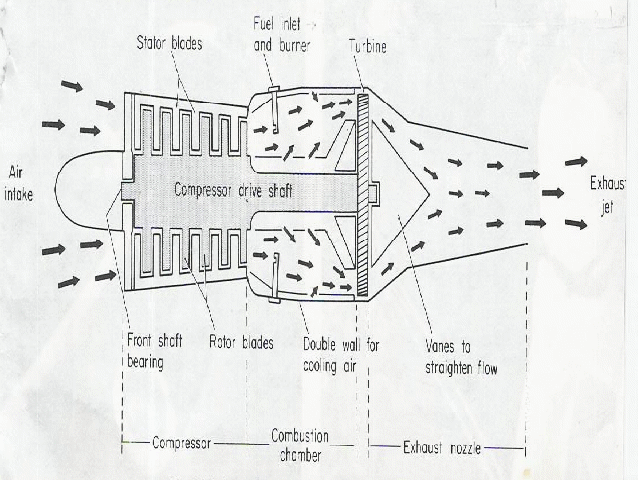Jet and rocket engines operate on the 'rubber balloon' principle. If a rubber balloon is filled with air and then let go, the air will be expelled. According to Newton's Third Law, the foce on the air as it is expelled will result on an equal for on the balloon driving it forward.

The rockets used in firework displays contain solid chemicals which when burnt produce a high velocity blast of hot gas. When the fuel is burnt up the rocket will fall back to Earth. Space rockets designed to travel large distances have tanks of liquid fuel together with a supply of oxygen enabling the fuel to burn. A chemical reaction takes place inside the rocket and creates a large force which propels the gaseous products of combustion out through the tail nozzle with tremendous velocity. Although the mass of gas emitted is small it has large momentum because of the it's large velocity. Newton's Third Law implies an equal momentum is imparted to the rocket so that the rocket also builds up a large velocity. Eventually the fuel is burnt up. By this time the rocket will be in orbit around the Earth, though it is falling freely under gravity, it also has a tangential velocity parallel to the Earth's surface. The net effect is that the rocket will move in a circular or elliptical orbit around the Earth.
Jet engines have been used on cars to break the land speed record and rocket engines on experimental trains supported by magnetic levitation but their use on landcraft is limited because of their high cost and the danger involved because of the high speeds and large forces involved.
